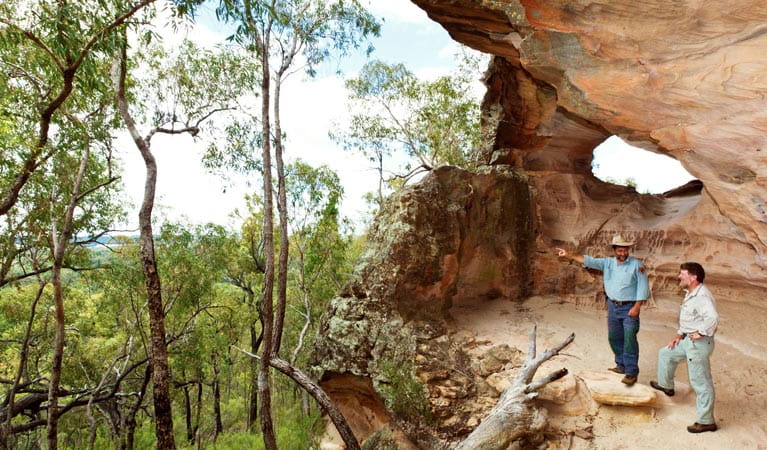Pilliga National Park
Overview
Pilliga Forest is an iconic Australian landscape offering rugged beauty on a grand scale. Located near Baradine, you can explore the trail network by car or on foot, and camp out.
Read more about Pilliga National Park
Pilliga Forest, sometimes called Pilliga Scrub, is one of the iconic landscapes of inland Australia. It's made up of Pilliga Nature Reserve, Timmallallie National Park, Pilliga West, and East State Conservation Areas.
Close to the town of Baradine, Pilliga is a vast forest that spans more than half a million hectares and features 2,000km of public access trails, so there’s a lot to explore either by walking or car touring. Explore along the Coonabarabran-Baradine-Warrumbungle scenic drive. You can set up camp at the Sculptures in the Scrub campground in Timmallallie National Park.
Be sure to take short walk at Sandstone Caves to find out about this important Aboriginal site and the Gamilaraay People’s connections to this ancient landscape.
As you walk or drive, keep your eyes out for some of the park's resident birds and wildlife, including rare barking owls and malleefowls. A particularly keen eye will spot the families of koalas who dine and recline on the many eucalypt trees which are found throughout this area. Other species that live here include eastern pygmy possums, swamp wallabies, eastern grey kangaroos, red-necked wallabies, squirrel gliders, and the south-eastern long-eared bat.
Local alerts
For the latest updates on fires, closures and other alerts in this area, see https://www.nationalparks.nsw.gov.au/visit-a-park/parks/pilliga-national-park/local-alerts
Map
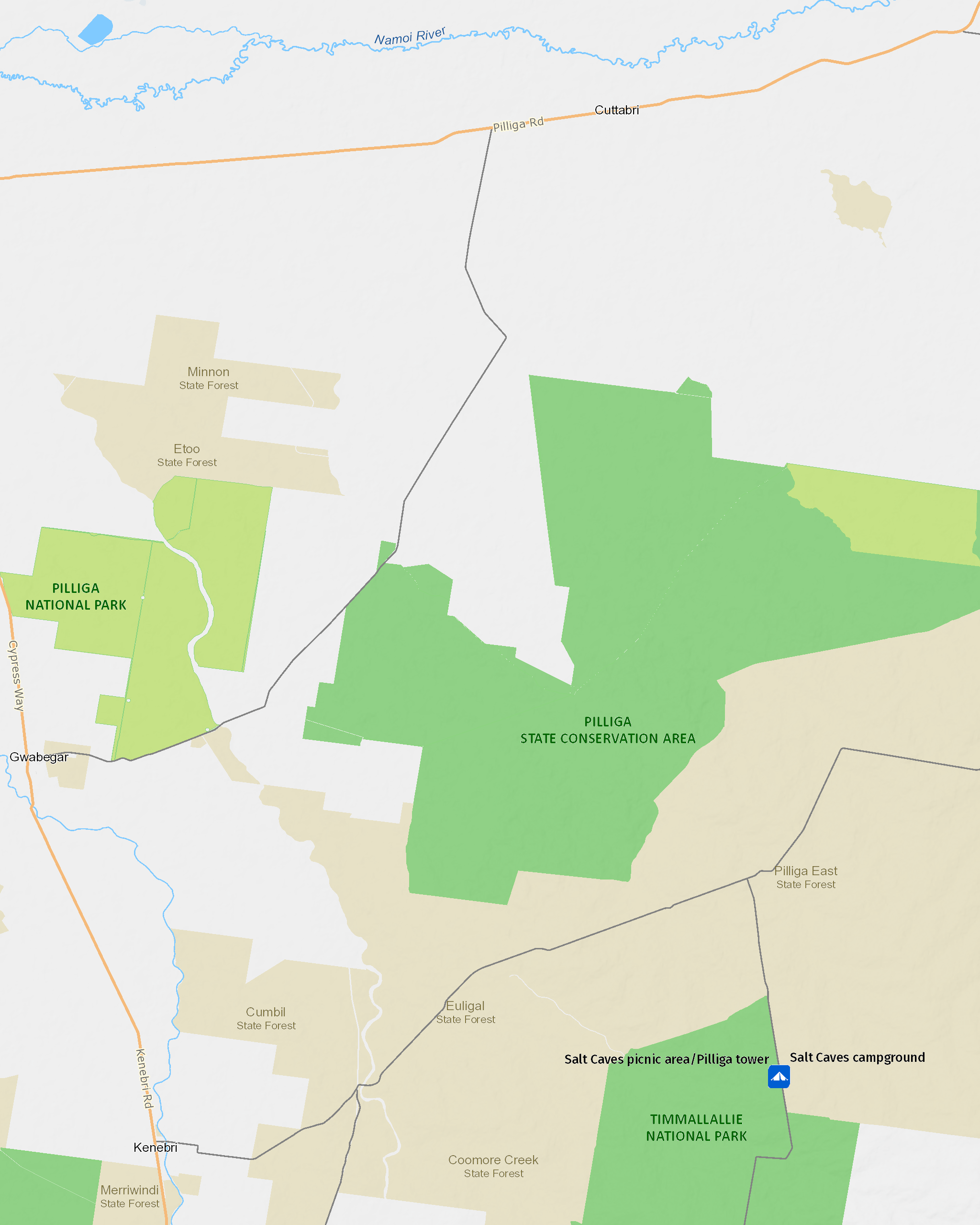
Map legend

Contact
- in the Country NSW region
Pilliga Forest is always open but may have to close at times due to poor weather or fire danger.
-
-
Pilliga Forest Discovery Centre
02 6843 4011
Contact hours: 9am to 4pm daily. Closed Christmas Day. - 50-58 Wellington St, Baradine NSW 2396
-
Email: pfdc@environment.nsw.gov.au
-
Pilliga Forest Discovery Centre
Visitor info
All the practical information you need to know about Pilliga National Park.
Getting there and parking
Pilliga Forest is a diverse area, featuring a complex network of roads. It’s accessible via the Newell Highway – it’s a good idea to drop into the Pilliga Forest Discovery Centre before heading out into the park.
Parking
- Pilliga Forest Discovery Centre See on map
Road quality
- Unsealed roads
Vehicle access
- 2WD vehicles
Weather restrictions
- Dry weather only
By bike
Check out the Bicycle information for NSW website for more information.
By public transport
For information about public transport options, visit the NSW country transport info website.
Best times to visit
Autumn
With ideal temperatures, autumn is a great time for bush walking, camping under the stars and following one of the many bird routes within the forest.
Spring
Spring is a beautiful time of year to visit, you can enjoy the abundant wildflowers and birds.
Weather, temperature and rainfall
You may experience a great range of temperatures on any day in the park. In summer it's generally hot in the daytime and temperatures often exceed 40C. In winter nights can be very cold, but you can enjoy clear sunny days. Rainfall is also highly variable, ranging from drought to prolonged wet periods, with the average annual rainfall around 600mm. Creeks may quickly become impassable after heavy rain.
Summer temperature
Average
15°C and 35°C
Highest recorded
45°C
Winter temperature
Average
2°C and 21°C
Lowest recorded
-6.1°C
Rainfall
Wettest month
January
Driest month
June to September
Facilities
Maps and downloads
Prohibited
Pets
Pets and domestic animals (other than certified assistance animals) are not permitted. Find out which regional parks allow dog walking and see the pets in parks policy for more information.
Smoking
NSW national parks are no smoking areas.
Visitor centre
-
Pilliga Forest Discovery Centre
50-58 Wellington St, Baradine NSW 2396 - 9am to 4pm daily. Closed Christmas Day.
- 02 6843 4011
Nearby towns
Narrabri (45 km)
Explore Pilliga Forest to see salt caves, native flora and fauna, and bore baths, or enjoy camping and bushwalking in Mt Kaputar National Park. Mt Kaputar's summit offers magnificent panoramic views, and there's excellent cabin accommodation within the park.
Coonabarabran (50 km)
Coonabarabran is the closest town to the craggy peaks and spires of the Warrumbungle Ranges. Warrumbungle National Park is popular for bushwalking, camping and encountering wildlife amid breathtaking scenery.
Learn more
Pilliga National Park is a special place. Here are just some of the reasons why:
Aboriginal culture
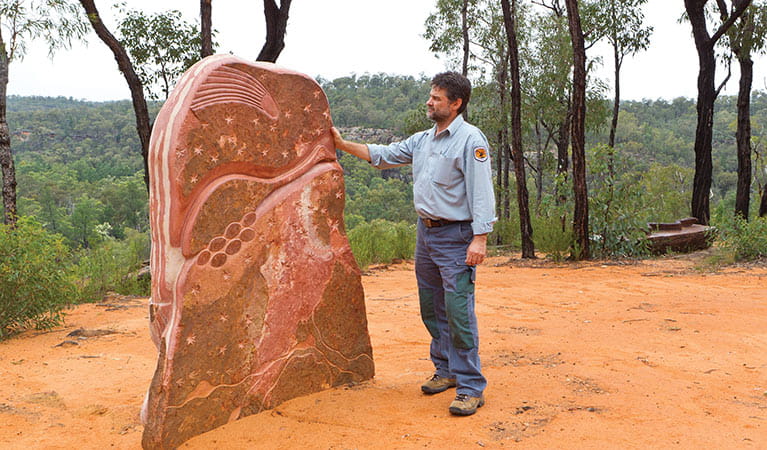
Pilliga is traditional Country of the Gamilaraay People and much evidence of their ancient connection to the land exists in the park today. On your exploration of the park, you may see stone tools, grinding grooves, modified trees, and rock art. Find out more about the Gamilaraay People and their ancient culture on a guided tour of Sandstone Caves, a place containing Aboriginal rock art and engravings.
A bird watcher’s paradise
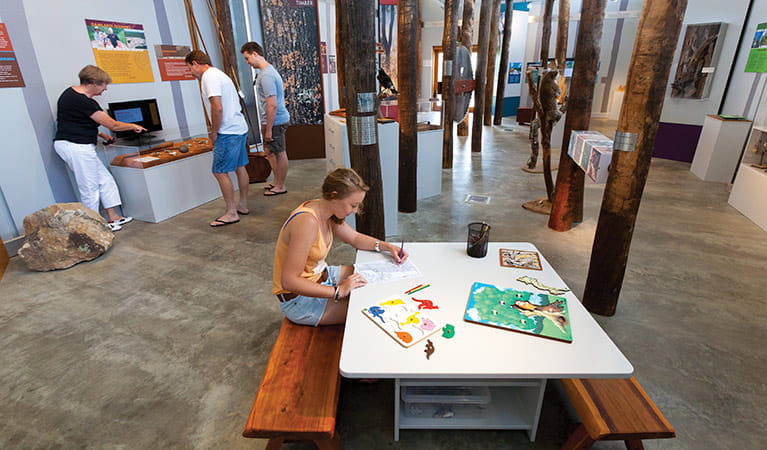
Pilliga Forest is a mixture of eastern and western climates, making it very attractive to birds – more than 230 species have been recorded. You’re bound to see some of that range during your time at the park, and if you keep a close eye out and bring some binoculars, you’re definitely see even more. Pilliga is one of the few places left in NSW where you can catch sight of the grey-crowned babbler. It’s a bird that lives in family groups and roost together in domed nests of sticks. Other birds you may see include glossy black cockatoos, brown treecreepers, regent honeyeaters, barking owls, and red-capped robins. For more information about great bird watching opportunities in Pilliga, be sure to pick up a copy of Bird Routes of Baradine from Pilliga Forest Discovery Centre.
- Pilliga Forest Discovery Centre The Pilliga Forest Discovery Centre is the best place for visitors and tourists to collect information about the Pilliga Forest before setting off on their adventure.
Koala territory
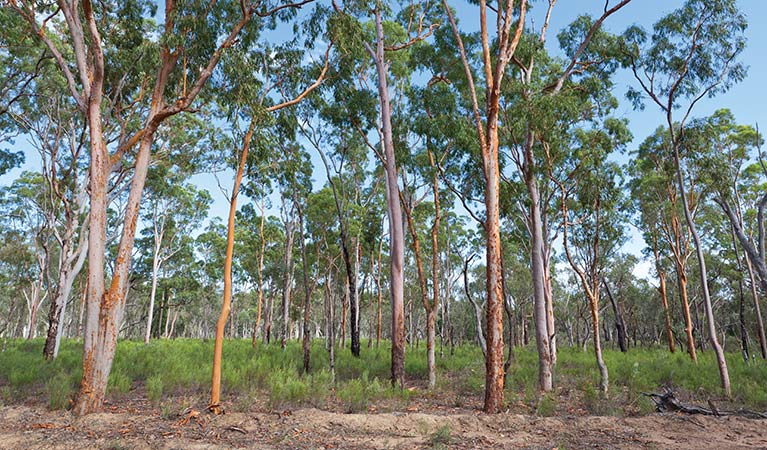
Pilliga Forest supports a vast number of mammals, including swamp wallabies, eastern grey kangaroos, red-necked wallabies, and eastern pygmy possums. Pilliga also has the largest koala population in NSW to the west of the Great Dividing Range – look for them in the forest’s red gums and the Pilliga box. If you are lucky enough to spot a koala, please report your sighting to the Baradine NPWS office.
- Pilliga rambles tag-along tour Come along on this fun tag-a-long tour in Timmallallie National Park. You'll walk alongside NPWS Discovery Ranger, Bevan, who'll share his experience and stories of the Pilliga Scrub.
Plants and animals protected in this park
Animals
-
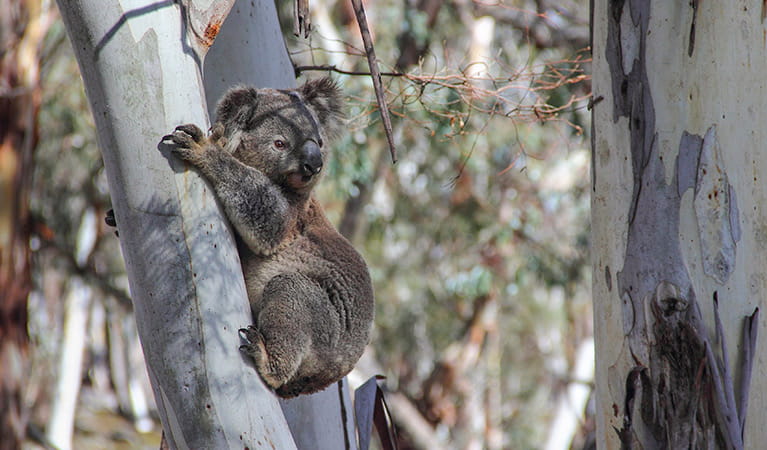
Koala (Phascolarctos cinereus)
One of the most renowned Australian animals, the tree-dwelling marsupial koala can be found in gum tree forests and woodlands across eastern NSW, Victoria and Queensland, as well as in isolated regions in South Australia. With a vice-like grip, this perhaps most iconic but endangered Australian animal lives in tall eucalypts within a home range of several hectares.
Environments in this park
Education resources (1)
What we're doing
Pilliga National Park has management strategies in place to protect and conserve the values of this park. Visit the OEH website for detailed park and fire management documents. Here is just some of the work we’re doing to conserve these values:
Preserving biodiversity
Pilliga National Park upholds its biodiversity by protecting vulnerable, threatened and endangered species. Conservation activities that are carried out include monitoring and data collection. NPWS consults on issues potentially affecting biodiversity within the area, and implements programs in relation to this.
Conserving Aboriginal culture
NPWS works alongside the Gawambaraay Pilliga Co-Management Committee in managing Pilliga Nature Reserve. Important Aboriginal cultural programs and initiatives are in place within this park. The Sandstone caves are an important focus of these activities.
Managing weeds, pest animals and other threats
Pests and weeds have a significant impact to the ecosystems within Pilliga National Park. Feral pig, fox and weed control are important part of the work NPWS does to protect the integrity of biodiversity within this conservation park.
Managing fire
NSW is one of the most bushfire prone areas in the world as a result of our climate, weather systems, vegetation and the rugged terrain. NPWS is committed to maintaining natural and cultural heritage values and minimising the likelihood and impact of bushfires via a strategic program of fire research, fire planning, hazard reduction, highly trained rapid response firefighting crews and community alerts.

